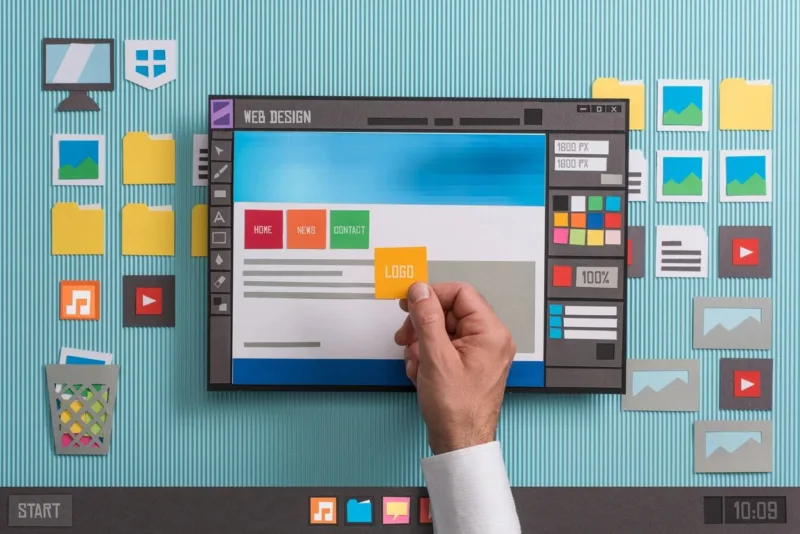Imagine a software development process that’s as flexible as a gymnast and adapts to change faster than your favorite social media platform. That’s the beauty of agile software development services.
Unlike the traditional waterfall method, where everything is planned upfront and changes are a nightmare, agile embraces flexibility and thrives on continuous feedback.
Think of it like building a house – you lay the foundation (core functionalities), then gather feedback from the residents (customers) to refine and add features as you go. This iterative approach ensures the final product aligns perfectly with user needs, keeping everyone happy.
But before we delve deeper into the agile magic, let’s take a quick dip into the not-so-happy world of traditional development methods.
The Waterfall Blues: Why Traditional Development Can Drown Your Project
The traditional waterfall approach to software development sounds good in theory – a nice, linear sequence of phases (requirements gathering, design, development, testing, deployment). But in reality, it’s like trying to navigate a river with giant boulders blocking your path. Here’s why:
- The Rigid Waterfall Approach: Imagine writing a novel where you can’t go back and edit a single chapter after you start the next one. That’s the waterfall method in action. Changes are difficult and expensive, often leading to frustration and delays.
- Limitations of the Waterfall Method: Real-world projects rarely unfold in a neat, linear fashion. New requirements emerge, market trends shift, and user needs evolve. The waterfall method struggles to adapt to these changes, potentially leading to a final product that misses the mark.
Thankfully, there’s a better way – a way that embraces change and keeps your project afloat! Let’s meet its champion: agile software development.
Embracing Agility: A Breath of Fresh Air for Software Development
Agile software development flips the script on traditional methods, prioritizing flexibility, collaboration, and continuous improvement. At its core lie four key principles that guide the entire software development process:
Individuals and Interactions Over Processes and Tools: Agile values skilled developers and their teamwork over rigid processes or fancy tools. Think A-team over assembly line!
Working Software Over Comprehensive Documentation: While documentation is important, a functional product that can be continuously improved takes priority over lengthy documents that might become outdated quickly. Imagine a car you can drive and tweak as needed, not just a giant blueprint!
Customer Collaboration Over Contract Negotiation: Agile prioritizes continuous communication with customers throughout the development process. This ensures the final product reflects their evolving needs – happy customers, happy project!
Responding to Change Over Following a Plan: Change is inevitable, and agile welcomes it! The ability to adapt to new information and requirements is crucial. Think of it like sailing – you adjust your course based on the wind, not just follow a rigid map!
These principles pave the way for a more responsive and flexible development process, fostering a culture of continuous improvement. But how exactly does this translate into benefits for your business? Let’s explore the magic of agile in action.
The Agile Advantage: Why Businesses Choose This Approach
The benefits of agile software development services are numerous, making it a popular choice for businesses of all sizes. Here’s how agile can help your project reach new heights:
- Increased Flexibility and Adaptability: The ever-changing world of technology and customer needs can be daunting. Agile’s flexibility allows you to adapt to these changes quickly, ensuring your software stays relevant and competitive. Imagine building a house with expandable walls – you can easily adjust the size as your needs evolve!
- Enhanced Customer Satisfaction: Continuous customer collaboration is a cornerstone of agile. This ensures the final product aligns perfectly with their needs and expectations, leading to higher satisfaction and loyalty. Think of it like designing a dream kitchen – you get constant feedback from the homeowner to create a space they love!
- Improved Project Visibility and Control: Agile methodologies like Scrum utilize regular sprint reviews and daily stand-up meetings. These keep everyone informed about project progress, potential roadblocks, and task status. Imagine having a clear window into your project, allowing you to course-correct if needed!
- Reduced Development Risks and Costs: Early detection and correction of issues are hallmarks of agile development. This minimizes rework and delays, leading to significant cost savings. Think of it like catching bugs early in the coding stage – you prevent a bigger infestation later, saving time and resources!
Whether you’re a startup launching your first app or an established company seeking to innovate, agile development offers a compelling package of benefits.
But with different methodologies available, how do you choose the right one for your project? Let’s explore some popular options in the agile toolbox!
Popular Agile Methodologies: Picking the Right Tool for the Job
Agile isn’t a one-size-fits-all approach. Different projects might require different methodologies to achieve optimal results. Here, we’ll delve into two of the most widely used agile frameworks:
- Scrum: The Iterative Sprint Cycle
Imagine building a complex machine, but instead of tackling the entire thing at once, you break it down into smaller, more manageable components. That’s the essence of Scrum, a popular agile methodology that utilizes “sprints” – short development cycles (typically 2-4 weeks) with a clear focus. Here’s how it works:
1. **Sprint Planning:** The team gathers to define a set of user stories (desired functionalities) they'll tackle during the upcoming sprint.
2. **Development:** The team gets to work, coding, testing, and refining the chosen user stories within the sprint timeframe.
3. **Daily Stand-up Meetings:** Short, daily meetings keep everyone on the same page, highlighting progress, identifying roadblocks, and finding solutions collaboratively.
4. **Sprint Review:** At the end of the sprint, the team showcases the completed functionalities to stakeholders.
5. **Sprint Retrospective:** The team reflects on the sprint, analyzing what worked well and what needs improvement for future sprints.
This iterative cycle ensures continuous progress, allowing the team to adapt and refine the product based on feedback throughout the development process.
Beyond Scrum: Exploring Other Agile Methodologies
While Scrum is a popular choice, it’s not the only option. Agile methodologies like Kanban offer a board-based approach, where tasks are visualized and move through different stages (to-do, in progress, done) providing a clear view of the development workflow.
The best methodology for your project depends on its unique characteristics and needs. Consider factors like project size, team dynamics, and the level of desired flexibility when making your choice. Consulting with an experienced agile development partner can help you navigate these options and select the ideal framework for your project.
Conclusion
In conclusion, agile software development services offer a refreshing alternative to traditional, rigid methodologies.
By embracing flexibility, collaboration, and continuous improvement, agile empowers businesses to deliver high-quality software that meets their evolving needs and delivers value to their customers.
Imagine a software development process that’s as responsive as your favorite fitness tracker, constantly adapting to keep you on the path to success. That’s the power of agile – a dynamic approach that propels your software projects forward, one iterative sprint at a time.
So, if you’re looking to navigate the ever-changing world of software development with agility and innovation, consider partnering with an agile development team to turn your vision into reality.






